Gary Vaynerchuk's Blog, page 23
October 28, 2019
Are you coming to ComplexCon?
I’m going to be at ComplexCon in Long Beach, CA on November 2nd, 2019 with K-Swiss!
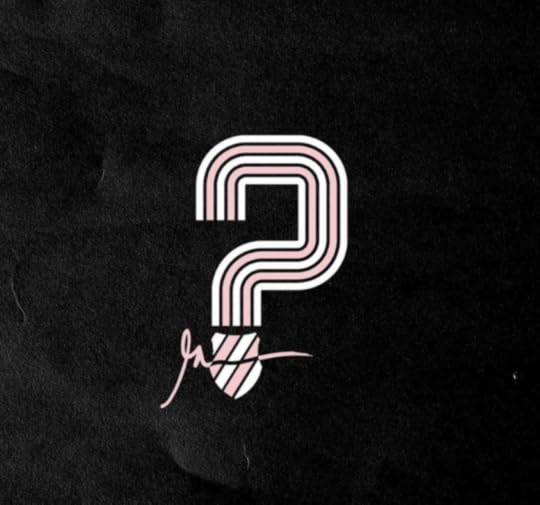
The event starts at 9am on November 2nd. I’ll be at the K-Swiss booth from 10:30am – 1pm.
Hit me up on my texting platform, I’ll be giving out some free tickets soon – 212-931-5731. Something big will be going down 
October 15, 2019
Gary Vee pivoted from selling baseball cards to advising key global players. Here, MuslimGirl’s founder, Amani, explores their shared journey, and the art of influence
The post Gary Vee pivoted from selling baseball cards to advising key global players. Here, MuslimGirl’s founder, Amani, explores their shared journey, and the art of influence appeared first on GaryVaynerchuk.com.
October 14, 2019
The Power of Surprise And Delight: A Case Study
Intro from Gary:
One of the things I’m most excited about is “surprise and delight” – it’s something I’ve talked a lot about in my book The Thank You Economy. One of my main objectives with my text platform is to do a LOT more surprise and delight.
What you see in this article written by my team one of my first efforts:
—
On September 12th, 2019, Gary sent a text to the Team GaryVee WhatsApp thread with an idea.
One of the things Gary’s trying to do is find new ways to add value to his text messaging community. He had an idea to “surprise and delight” some of the members who signed up.
After asking a couple of people on the team to help, he posted a tweet asking for florists to send an email.

A ton of emails came in from florists from all over the place – but to keep things simple, we decided to concentrate on just a few big cities in the US. We started talking to florists who emailed from Boston, Miami, Nashville, and some cities in NY and NJ.
Huge shoutout to all the florists involved:
NEW YORK
NEW JERSEY
BOSTON
NASHVILLE
MIAMI
Once we talked to the florists and made some deals, Gary sent a text message to everyone on his community text platform in the above areas. He sent out a link to a form for them to fill out with their addresses.

We ended up selecting 248 people who filled out the form at random. Then, we sent their names to the florists in the respective areas with a personal note from Gary.
They all got mailed out the very next day! All 248.
It was SO fun to see the reactions:


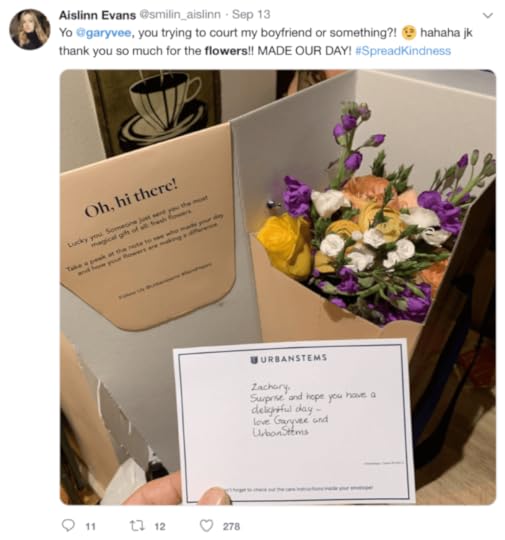


Some members who received flowers also wrote long articles about the experience on LinkedIn.
Like Gary says, the best marketing strategy is to care! In this digital age that we’re living in, it’s very easy go on Twitter, Facebook, Instagram, LinkedIn, or any other social platform and talk about any experience you had – positive or negative. It makes it easy to “yell” when something goes wrong, but also easy to yell when something goes incredibly well.
Going above and beyond to surprise and delight your customers in a way they wouldn’t expect is a great way to leave that impression and show what your intent really is.
If you found this article interesting, share it on Twitter!
The post The Power of Surprise And Delight: A Case Study appeared first on GaryVaynerchuk.com.
October 8, 2019
“Quantity” Can Be The Gateway “Quality” – A New Way To Think About Content
People always ask me whether I prefer “quantity” or “quality” when it comes to content.


To me, the answer is always both – you want more quality and more quantity. I always talk about how the creative is the variable of success and I couldn’t believe in it more.
But if I really had to pick just one, I’d go with quantity.
Here’s why – a lot of people think that quantity comes at the expense of quality but I think it LEADS to quality. It gives you more opportunity to find out what “quality” is.
So many of you are not posting because of your own subjective opinion about your content, not what the audience actually cares about.
The more content you put out for more audience demographics and segments, the more you can really understand what they respond to and refine what you’re putting out based on actual data – instead of only depending on the subjective opinions of decision makers.
So even though I believe that creative quality is the variable of your success, it’s the quantity execution that becomes the opportunity to figure out what the quality is.
The reason I have so many insights about content is because I’ve created a machine around me that allows me to listen at scale. It looks like I’m just talking, but it’s led to a level of listening that gives me such profound consumer insights. The next decade is will be one enormous game of value of output – and whichever companies figure out that game first and can execute it will pick up disproportionate market share.
More volume doesn’t mean you post for the sake of posting
Creating more volume isn’t about posting for the sake of posting. Having the post-production capabilities or the skill set to create contextual content for the platforms that matter for you (i.e. LinkedIn, TikTok, Instagram, etc) is equally important.
Ironically, volume of content inevitably makes your content more relevant to the people consuming it. Once a company or a brand accepts this framework for producing content, the next thought is, “so… what are we going to say?”
Once you have the option to create so many pieces of content, you can start the process of making them contextual to specific audience segments. You can make content for – say – female CIOs in Russia. And because you’re making a ton of content, you’re not going to make “vanilla” anymore. You’re no longer depending on 2-3 pieces of content to reach and convert everybody.
Once you adopt this framework, you become deeply knowledgable of how powerful these social platforms really are. For example, if I want to reach a CTO who went to MIT, I can use MIT colors in my creative to make it more likely for him or her to click into it. Imagine being able to scale that concept over many job titles, locations, schools, and organizations. You can literally make a piece of content that starts with “Hey, are you 28 years old?”
View this post on InstagramA post shared by Gary Vay-Ner-Chuk (@garyvee) on Jul 26, 2019 at 4:49pm PDT
After a detailed conversation about this, you can’t imagine how fast 100 pieces of content actually starts feeling too little!
If you don’t have a team, start by picking the content formats you’re best at
If you had the option to go back in time and buy up beachfront property in Malibu for pennies on the dollar, would you do it?
The answer is yes!
The number one asset for you no matter what you do – whether you’re a financial advisor, whether you’re in real estate, whether you sell sneakers, or whether you’re trying to run for mayor – is attention. You need other people’s attention before you can tell them what you want from them.
Attention is the singular asset. And right now, the attention of the world sits in mobile devices at scale on a handful of social platforms. And the game is about communicating with them in written, audio, and/or video form.
Ideally you’d do them all – but if you really don’t have resources, think about what you’re best at. Are you a great writer? Do you feel comfortable on video? Or are you more introverted and want to do a podcast? It doesn’t matter what it is, just start talking – then start doing it a lot more.
To produce 100+ pieces of content a day, maybe 52 of those are just single tweets. Maybe 26 of them are Instagram stories. Maybe 1 of them is a blog post and you’re able to repurpose some of the text for your tweets. Maybe you write text posts or record short videos on your phone for LinkedIn. The volume will give you the opportunity to hit different segments and find out what messages the market deems as “quality.”
For example if you’re a real estate agent and you’re trying to sell a home, if you make 1 video, a 22 year old woman who makes $100k a year and a 49 year old woman with two kids making $47k are going to look at it very differently!
We have these platforms that allow us to target people at such narrow levels at scale – the volume of creative helps you context the creative to different segments. When I say things like “Hey California!” Or “Hey Mexico!” at the beginning of my videos and run it in those areas, they do disproportionately better.
The opportunity out there is just remarkable, and it WILL go away!!
If you thought this article was interesting, please share it on Twitter!
The post “Quantity” Can Be The Gateway “Quality” – A New Way To Think About Content appeared first on GaryVaynerchuk.com.
September 27, 2019
How We Created 7 Million Extra Views
We wanted to share some tactics and examples of how we (Team GaryVee) create content for Gary’s social channels!
To really break it down, we used some examples of content we created from an episode of 4Ds (a business consulting session that Gary does for entrepreneurs, personal brands, and SMBs) based on The GaryVee Content Model.
For those of you who don’t know, here’s a quick explanation of what the content model is:

The GaryVee Content Model starts with a “pillar” piece of content – this could be a daily vlog, Q&A show, keynote, podcast, or any other piece of content that directly documents Gary’s life. Then, we use that pillar piece of content to create smaller pieces of “micro-content” – images, short videos, mashups, GIFs, articles, memes, quotes, etc – that we can distribute across the platforms that matter.
On July 23rd, Gary recorded a 4Ds session which we broke down into 30+ pieces of micro-content to distribute across 6 – 10 different platforms. In this case our “pillar” piece of content was the 4Ds episode.
To learn more about the content model in detail, check out this article and Gary’s 86-page deck that goes along with it.
Here’s how we thought about each clip from the 4Ds episode and some context on why we made it:
Clip #1: I Enjoy The Game, Not The Trophies
To decide on the title for this particular micro video clip, Gary and the team came up with four title options and posted it as a poll on Twitter.

When we presented it on Twitter initially, we also shared the video clip with title options and subtitles to engage viewers (since many people browse Twitter without their sound turned on).
Using the poll option on Twitter allows the community to easily vote on the best title, and choose which one they like best. This also lets us involve Gary’s community more in the content production process, which is always something we try to do.
Letting people participate early in the process (before a clip goes out) makes the process fun, exclusive, and builds some excitement within the community for when that clip actually goes live.

Clip #2: Of course your employees don’t care as much as you do
We’re always looking for strong, actionable messages that Gary talks about and in this one, there’s a little bit of a twist.
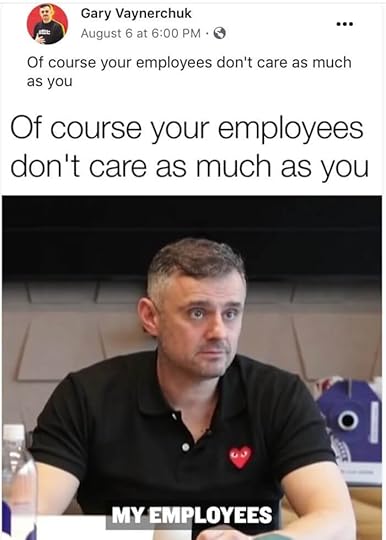
In this video, Gary mentions how most employees at VaynerMedia are out of the office by 6pm. We thought viewers would find that surprising and interesting, given Gary’s work ethic and how much he works.
We framed this clip to appeal to two different audiences: 1) employers, and 2) employees. Employers are the ones evaluating employees and doing the hiring / firing, but employees are sometimes misunderstood as “not working hard enough.”
When Gary stands up for the employee and shares some of his countercultural points of views about management, we’ve found people respond really well to it.
Clip #3: “I owned weedlibrary.com in 1997”
In this part of the 4Ds session, Gary talks about owning a cannabis-related domain name in 1997 and being ahead of the curve when it comes to rise of cannabis.
From there, he started talking about a different topic – how he doesn’t feel the need to brand himself as a “cannabis expert” despite being ahead of the curve, and how many people are “chasing” new trends.
We ended up not using this clip because Gary jumped from one topic to another within a few seconds. Because he didn’t fully finish his thought process, we didn’t feel like it would provide enough value to the audience, so we didn’t put it out.
Clip #4: Stop posting “booty pics” to get more likes
Gary often tackles topics that other people shy away from. When that happens, we jump at the opportunity and chop it up into a micro clip because that’s a big part of what makes Gary so refreshing to listen to.
That’s why we produced this video:

When we produced this video (and when we produce Instagram video content in general), there are 4 things we try to include:
A 3-5 second “hook” – We move a 3-5 second video clip to the front of the video to capture people’s attention as they’re scrolling through the feed. The hook is the portion of the clip before the audio tag. Audio tag – After the hook, we always include the sonic branding audio tag. This is a mandatory part of every clip – Gary really believes in the future of voice, and this is how he’s going to establish his brand in audio form. Title – Next, we craft a title that gives actionable advice based on a quote or statement Gary said. This is something that we’ve seen our audience respond well to. Call to Action – At the end of the video, we typically have a call to action that directs people to do something. The core of Gary’s message is to “do” so we try to close with some specific direction of what you should be thinking about or doing next.
Clip #5: A video for TikTok
Gary’s been super bullish on Tiktok lately and we want to make sure that with any video, we think about how we can tailor the content to that platform.

Once we found a moment from the video that we thought would work for TikTok, we found a trending song on TikTok that matched the moment from the video that we wanted to share. When we found the song, we did our own version and our own edit in Adobe Premiere.
Once we finished the whole packaging of that clip, we exported the clip to TikTok, and chose the muted version of the same song to overlay when posting (so the algorithm would know we used it).
Clip #6: The podcast triple threat strategy
When Gary gives tactical advice, we really like to take advantage of that and build it out into a deeper, more in-depth video clip.
That’s what we did with this video – Gary broke down why podcasting can be a great hack for producing more content. We inserted some slides, music, and editing to make it easier for people to follow along and implement the advice.
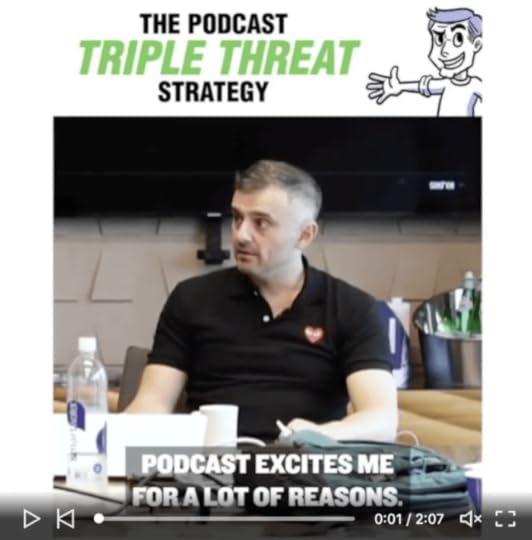
To take full advantage of this concept, we also created a cartoon to publish on LinkedIn, as well as a cartoon slide deck that breaks down this concept in a clear, step-by-step way.

We only showed you a few examples of the pieces of content we created from this hour long 4Ds session, but here’s the total impact of the ~30 pieces of content we put out:
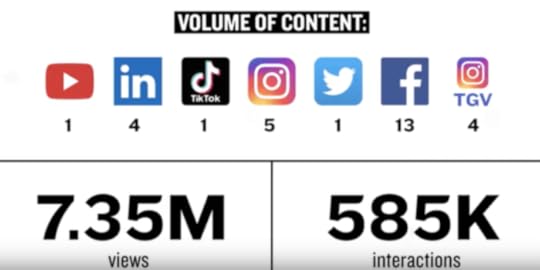
We also put out this blog post, a podcast, and several other posts not included above 
September 25, 2019
Strike While It’s Hot: It Doesn’t Matter If A Platform Is Around In A Year
I’ve been really hot on TikTok recently.
At the time of writing this article, I believe that TikTok and LinkedIn are two of the best platforms for people to go from zero audience to actually having one because of the ridiculously high organic reach.
I’m getting emails and DMs from people who are literally joining TikTok and getting thousands of views on their first piece of content – the attention that’s available right now is just that high.
But I’ve been hearing from some people who ask things like “what if TikTok dies”? “Is it just a fad?” “What if I spend time putting in work and it goes away?” “What if it goes away like Vine?”
This guy asked a question along those same lines:
The truth is, it really doesn’t matter if TikTok is around in 6, 9, 12, or 24 months – that’s not the point. I don’t care if it’s gone in a year.
Here’s why:
You get still get the brand value
It doesn’t matter if a platform goes away because if you attack it when it’s hot, you still get the BRAND value. And when you get brand value, people will find you even when that platform goes away.
That’s why we still know who Tila Tequila and Dane Cook are today – they built enormous brand value back in the heyday of MySpace. P. Diddy still trades on the equity he got during MTV’s heyday from crushing it back then.
Many of the biggest stars on Snapchat, Instagram, and YouTube popped on Vine first – like King Bach and Logan Paul.
Let’s not forget that I built my brand on Twitter initially when I was building Wine Library. Eventually, those people followed me on other social platforms even as Twitter went down a little bit in attention over time.
Here’s the punchline:
This is a combination of 1) attacking the current platform while it’s hot, and 2) not shitting on newer platforms as they get more and more attention.
People either don’t attack a platform hard enough, or they wait until a platform proves that it’s “established.” Many actors and actresses in Hollywood who didn’t want to go on Instagram a few years ago realize that they made a mistake now.
A good way to balance this is the “79/21” rule.
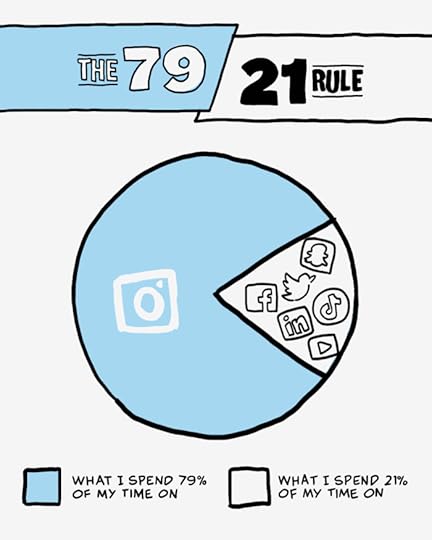
In other words, spend 79% of your time on the platforms that bring you the most value (right now, that’s mostly Instagram for me) while spending 21% of your time building on other platforms (LinkedIn, TikTok, Twitter, and other things are in my 21%).
Over time, platforms will transition from your “21%” into your “79%” – and when that happens, you’ll be ready.
The learnings will translate
Even if a platform goes away after a few months or a year, the learnings translate to whatever comes next.
Before Instagram, Snapchat, and Twitter, I had accounts on SocialCam and DailyBooth.
SocialCam was a mobile app where people could capture and share videos online and on mobile. On SocialCam, I learned how to create vertical video content and the dynamics around it. I deployed those learnings on Vine. Then, I took all of those learnings and used them to crush on Snapchat, and then completely dominate on Instagram.
If you asked me why I dominated Instagram over the past couple of years, I’d say it’s because of the things I learned on SocialCam that helped me become a great creator of IGTV videos. And right now, the reason I’m doing well on TikTok is because I did well on Vine.
The thought of making videos on your mobile phone was really new back in the SocialCam / DailyBooth days. The first time I did a selfie video was on SocialCam. The first time I took a selfie was on DailyBooth. But those learnings are still helping me today with the channels that matter now.
So it doesn’t matter if it’s going to be around or not. Striking a platform while it’s hot matters way more than if that platform is around in a decade.
The post Strike While It’s Hot: It Doesn’t Matter If A Platform Is Around In A Year appeared first on GaryVaynerchuk.com.
September 23, 2019
Read This Before You Make Another Decision
It’s just the truth – you don’t know the alternative and you never will. There’s no time machine, there’s no future machine, there’s just no way to really know whether you made the right move or not. Whichever decision you make, you won’t know how the other one would’ve played out.
Let me give you an example…
Let’s say you start your business (instead of doing something else like staying at your job), and it becomes huge and you turn out to be right in your hypothesis. And let’s say that led to a big meeting in a different country and you had to fly there – and in the process, your plane crashed and you died.
That would’ve turned out to be a bad idea.
There’s no way of truly knowing. If you follow my content, you know that I famously passed on investing in Uber in the angel round twice, which means currently, I missed out on $600 million. You could think that’s a mistake, but maybe if I did invest in Uber I’d be somewhere else right now picking up a disease that would end up killing me a year later!
Everybody thinks they can have the perfect decision. There is no perfect decision. There’s just life.
So pick one and be happy with it!
2. Instead of trying to make the perfect decision, create more opportunities.
Create more 10-15 minute meetings to open the gateway to new relationships. Run more marketing tests to give you the opportunity to find a strategy that works.
Some of the best decisions I’ve made were things that didn’t look that good on paper in the beginning. Plenty of serendipitous meetings have led to incredible partnerships and investments that were completely unexpected in the beginning.
Be more efficient with what you do so you can do more things, and so you don’t have to worry about the subjective and uncontrollable factors like “knowing” what’s good or great. In other words… create the volume you need to give you a better shot at finding those opportunities that will lead to success and happiness instead of debating what’s going to work.

3. 9 out of 10 times, the right decision is the fastest decision.
This doesn’t mean you shouldn’t be thoughtful, it means you spend your days becoming a practitioner and becoming great at what you do without overthinking every move.
In a world where everyone tries to make the perfect decision all the time I go the other way – I think every decision I make is a mistake, and if something works out, it’s a happy upside.
I just value the speed of the decisions I make over perfection because I can always fix the wrong decision. I assume everything is a mistake, I’m thrilled when it works out, and when it actually turns out to be a mistake, I make a change.
It’s a big reason why I’ve been able to build big businesses fast.
4. Stop caring what other people think about your losses.
My losses are my losses. I don’t care what you think about my loss because you’re losing plenty on your own.
Once you really get to a place where you don’t care what other people think, you get to a place where you can move much faster. When you’re not spending time worrying, you’re spending time executing. Speed matters more than ever in the world of business today and when you’re not spending time worrying about what people think, you’re in execution mode.
This ties into how I think about building culture in businesses – when you feel safe in your work environment and feel safe to have conversations, you’re not spending time scared of whether someone is trying to “ruin” you or undermine your success. It allows employees to move faster and execute on their actual work instead of trying to navigate politics.
I do everything I can to put myself in a position where I’m in constant execution mode at all times.
If you got value from this article, please share it on Twitter!
The post Read This Before You Make Another Decision appeared first on GaryVaynerchuk.com.
September 20, 2019
Like They Say, Nothing In Life Is Free
Never ever do something you can’t afford financially or emotionally.
That being said, some make emotional decisions over the idea of “free work.”
As they say, “nothing in life is free.”
People treat this as a privilege issue but I think it’s an opportunity issue. Many can afford it but aren’t taking the risk because they don’t value the exposure, relationships, learnings and I respect that if that’s one’s opinion.
Obviously sustained free work is impossible and the length is predicated not only on one’s savings but also their side hustle, how they spend their money to live, if they’ve made money before, if they have to help their parents, or a number of other things.
An increasing amount of skills that are wanted in the real world don’t require a college degree, nor has the curriculum caught up to the actual needs of the marketplace.
And for many, the opportunity to work closely with others who have succeeded in the industries that they are most interested in, or even better – and this is really where I’m going with this hypothesis – if you’re able to get to the top 100 people in your desired craft or industry and that requires an unpaid free consultation, an unpaid 2 month internship, a 4-month project, or 2 videos to be made for that person, then this is something you have to highly debate.
This is “your foot in the door.”
People make the debate that you should “know your worth” and that the person may be taking advantage of you – I just don’t see that because A) you don’t have to do free work, so somebody else can if they choose to, and B) in the course of my career, I’ve seen an uncomfortable amount of people go on to achieve big successes in their fields.
When I ask them how they got started, many started with extremely humble starting points producing for / creating for / bringing value to someone who was at the top of that game at the time. That could be an unpaid or very low paying internship, starting their own company for consulting and giving that person a creative project project for free (because that person’s logo or name brought value for them to build their business on), or something else.
The reality is, life is not binary. Why are we in a culture where it’s perfectly fine to go into ~$50,000 in debt for a diploma that brings no value and then go into the ecosystem and struggle to find a job – yet the idea of working for Anna Wintour, producing content for free for her Instagram while at 7pm to midnight flipping thrift store buys or working at a restaurant, living in a studio apartment with 2 friends, and using that opportunity to get into the fashion industry (if that’s your passion) is demonized?
That is a much more specific and subtle execution of “free” but an important one because a lot of people are closed out to it – because just like how they think I’m saying “free all the time”, they’re saying “never never never.”
This is my definition of free work.
When I think back to Wine Library, in the first few years of trying to build a presence locally, I would give my services to go people’s homes. Somebody would come in and buy a nice bottle of wine – and not only would I offer to host a wine dinner for them that had 5-10 of their neighborhood friends, I also offered to bring the wine for free because I felt that I would meet ~6-7 couples who had been shopping somewhere else who would then consider Wine Library.
When I started VaynerMedia, I didn’t have money (because I didn’t pay myself much when I was building Wine Library) — that’s why the company’s first location was in a conference room in Buddy Media’s office.
Many of the clients we got at first were paying us very minimal fees. We also did several projects basically for free – aka I would spend 3, 4, 5 hours of my time in a conference room strategizing and ideating for companies on how to create their social media strategy. I did that for countless companies, I also flew to many company offsites (on my dime) and gave speeches on where social media was going.
So not only was I not paid, I lost money, But I knew the awarenesses I would get from the audience and the words coming out of my mouth could and would lead to business development.
To this day, with the leverage we have and awareness we have at Vayner, I still will strategically give a speech or do a consultation for free on my dime. I literally did it a the Tuesday after Labor Day this year – on my dime – I spoke to a group of very senior executives.
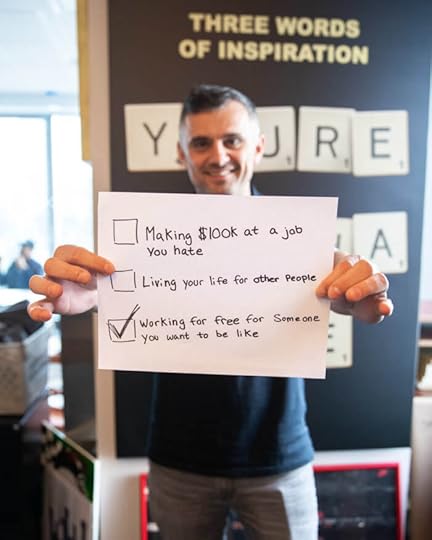
A lot of people take a very emotional POV on this. I’ve spent my life paying tens of thousands of employees – at this point, it’s not about not wanting to pay, it’s about creating a conversation where people can be a little bit more strategic about understanding what value do they have to bring and how can they monetize it in a better way? We herald Beyonce when she trades her concert for Uber stock which became far more valuable than she would’ve been paid there.
I genuinely believe that the binary transaction of “work for cash” is ideological. I believe that there are many other things going on, and the social currency / awareness / learnings / opportunities are very real. There’s also the ability to redefine yourself, the ability to prove to somebody you can do something, the ability the work for a week to make friends with people who could become your best friends, potential spouses, mentors, co-founders, etc. This binary thought of “never work for free” is crazy – trading your services for something in return happened long before currency hit the system.
When I say work for somebody you admire or someone at the top of the craft for free, I’m not saying “let Beyonce take advantage of you” or “let Joe the CEO take advantage of you”, I’m saying I genuinely believe you’re going to extract more value out of Beyonce from working for her for free than getting paid $41,000 at an entry level job at a music company.
Strategic free work is being self-aware enough to know why you’re doing it. You know that you want to be in the architecture industry, music industry, or media industry, and you know have something of value to bring (like understanding and executing on TikTok, for example), and you offer Tiktok content creation for the leading architects in the world.
Free work is also about putting yourself in the best position to succeed. Let’s say you want to be in the football business – and that you’re a content creator for Tom Brady. But your hope is that it will lead to some other opportunity in the industry down the road. After a while, you realize that it’s not going to happen – you don’t feel like you’re getting “value in return” because you’re not being introduced to others, not learning much, etc.
Good news is, you’re in control.
Literally a week later if you feel like the Tom Brady job isn’t going to lead to the opportunity you thought, you’re in control to leave. You’re also in control to persevere for another month and stay until everyone’s more comfortable and the kimono potentially opens up.
You’re in control. You’re in control of even considering this as a thesis – just like the people who are adamant that I’m a bad guy or that this bad advice. I’m empathetic to them. But I’m no more “right” than they are. For the individuals that read this article, you get to decide.
The demonization of free work or spec work is fine, it’s just something that I know thousands of people have used to become uncomfortably successful. And those are just the people I know of – which means many many more have.
People say that the ones who can do free work are privileged – I argue that the ones who fight against it are privileged and don’t realize how many people would just like a foot in the door. Those people who fight against it don’t realize how many people can never get a shot, and the aggressive, creative idea of “I’ll show you” is exactly how people who wouldn’t have had a shot actually started the process of getting the shot.
The post Like They Say, Nothing In Life Is Free appeared first on GaryVaynerchuk.com.
September 13, 2019
Your View of Money Changes After 35
How you think about money today is not likely how you’ll think about it tomorrow.
According to our Gary Vaynerchuk and a new study from CivicScience people’s perspective on money changes as they get older. In fact, those under the age of 35 are twice as likely to believe that money equals happiness.
Likewise,
Gary asserts that those under 30 are too often in a rush to chase money for material
possessions like BMWs, Rolex watches and vacations they believe will impress other
people.
“You will
never ever care about money the way you did before,” says Gary. “It won’t
happen … You get less fancy with your vision as you get older.”

Credit: Civic Science | https://civicscience.com/latest/
As people get older past 35, they start caring more about things like health, family, friendships, and their home life. These are the sorts of things that really impact happiness and how people define “success” over the long term.
The watches you buy won’t make you feel as nice in a decade.

Gary believes that happiness is the unlock over money. “I just want to chase happiness and put health on a crazy pedestal.” As a boy his great grandmother taught him a lesson he never forgot when she said, “if you got health, you’ve got wealth.”
It also explains
why, Gary says, some friends are truly happy and not wealthy, while others are
worth millions of dollars and are “miserable as fuck.” Too many people focus on
the money when it’s about doing what they want to be doing.
In the end …
“Money can’t
be the north star.”
@garyvee”
The post Your View of Money Changes After 35 appeared first on GaryVaynerchuk.com.
September 6, 2019
Join Team GaryVee: How To Make Instagram Content
On August 12th, 2019, I sent a voice memo to my team:
I wanted to find a way to add more post-production capabilities beyond what we have on our own team and empower content creators out there to just “make.”
So I came up with an idea:
#JoinTeamGaryVee – a way to open-source our content production to the entire Vaynernation.
Check out the announcement blog post for more context – below, you’ll find some guidelines and tips for making and submitting the best content for my Instagram.
Read carefully and save this article if you need to – even if you’re not planning on submitting content, there’s still a ton of value in here for those of you trying to grow your brands online 



